
The History of IndyCar
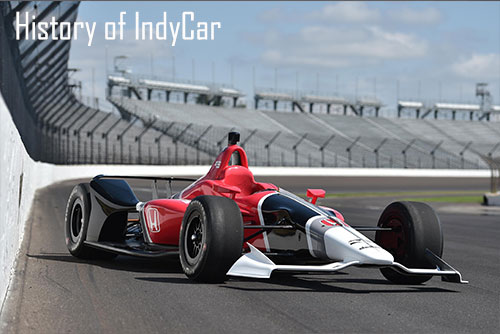
As unfair as it may sound, there are typically two types of IndyCar fans: the casual observer and the fanatic. The casual observer is generally one who enjoys watching the big events, such as the Indy 500. The fanatic, however, is simply obsessed with everything to do with the sport. Their thirst for knowledge is unquenchable and their appetite for speed, thrills, and racing never satisfied.
To the super fans of IndyCar, history is an important aspect of the sport. That is because history allows us to piece together the who, what, why, when and how of one of America’s proudest racing series. With a history that dates back to the early 1900s – and a wealth of ups, downs, twists, and turns – IndyCar has made its mark on the world. There is room to be inspired by history and certainly a lot to be proud of.
Every sport has enjoyed particular periods of success and at least one “golden age.” It can also be considered nothing less of a truism to suggest that every sport has its standout competitors, who are immortalized as icons and legends of the sport. IndyCar has certainly enjoyed a number of exceptional periods in its history, punctuated by exceptional drivers that have done their bit to leave us addicted and wanting more.
As IndyCar has developed from its formative years to the money-spinning, commercial sport that it is today, it has gone through stage after stage of evolution. There has been glory and triumph, as well as disappointment and defeat. We have witnessed incredible finishes and drivers who have failed to reach their potential. Each and every story that has unraveled over the years has contributed to the sport, of that there is no doubt.
Today, we will look over the enthralling history of IndyCar, from its humble beginnings to the global sport it is today.
Those Humble Beginnings
Although the history of American open-wheel racing is rich and treasured, it would not have been anything without the early pioneers of racing. America cannot lay claim to kickstarting the global fascination with auto racing, however, as that distinction belongs to the French. In particular, a Parisian magazine by the name of Le Petit Journal inspired would be drivers to take part in the world’s first racing competition.
It was on July 22, 1894, that a race from Paris to Rouen was advertised by the magazine. There were 102 entrants, each paying 10 francs as an entry fee, but there were only 69 drivers to take part in the qualifier (which was a 31-mile race to establish who would make the 79-mile big race). 25 of those drivers made it to the main event, which was a mix of amateurs and those involved in automobile manufacturing.
This event would send Europe crazy for auto racing for years to come and inspire drivers from all around the continent to race. In the United States, it wouldn’t take long for those in the racing industry to create the first automobile competition on American soil. The Thanksgiving Day Chicago Times-Herald race of November 28, 1895, saw Frank Duryea cross 54 miles from the south to the north of Chicago (and back again) in 7 hours and 53 minutes.
While the race is considered by many to be more of an experiment than a race, it plays a huge part in the history of IndyCar. For one, it ignited a burning fascination among Americans with automobile racing. Additionally, it proved that America could challenge the Europeans (who were making steady headway in auto racing). There is little doubt that these humble beginnings were integral to American open-wheel racing as a whole.
The Formation of the Automobile Club of America
If America was to catch up with France, who had set the bar for auto racing in the late 1800’s, it would need to be organized. The French were going crazy for racing and had “Speed Week” in Nice (the first regular racing fixture) and a number of the best automobile engineers and designers on Earth. They appeared to have it all. As such, their model would be the one to use for American auto racing.
Even James Gordon Bennett Jr. – the owner of the New York Herald – was a huge fan of what the French were doing. His presentation of a trophy to the Automobile Club de France (ACF) in 1899, in order for the ACF to create an international racing competition, was pivotal in the development of racing as a sport. With this event, France’s superiority could be challenged by other countries around the world, including the U.S.
That same year, the Automobile Club of America (ACA) was formed in order to define American auto racing practices. The ACA would model itself on the ACF in France, who was, undoubtedly, the world’s foremost auto racing association. However, the ACA would not last more than three years. In 1902, the American Automobile Association (AAA) was formed, with a number of ACA members joining its board.
Pretty soon after the formation of the AAA, races were sanctioned in the United States. The most famous of these races was the Vanderbilt Cup in 1904, with William Vanderbilt favoring the AAA over the ACA to organize the event. This was the first international event held on American soil, at a track in Nassau County, Long Island. The inaugural event was won by America’s George Heath, who was driving a Panhard.
The American Grand Prix
In 1905, the AAA Racing Board announced that it was to sanction the National Track Championship. This was the first ever time that an organized points system was used in auto racing, something that would become an integral part of sanctioned races thereafter. Just one year later, however, and the event was canceled. Despite the shaky start, it looked as though there were promising signs for American racing.
Throughout this time, the ACA and AAA were engaging in a feud. Both associations had differing ideas for how racing should be organized in the United States. The ACA, who had aligned themselves with the ACF pretty much after their formation, created the American Grand Prize as a competitor to the Vanderbilt Cup. As international Grand Prix races were at the forefront of the sport, this didn’t seem like a bad idea at all.
Just a few years later, in 1908, it appeared that the ACA and the AAA had reached an agreement that would keep both parties happy. Under the terms of the compromise, the ACA would oversee the sanctioning of all international race events in America, while the AAA would sanction everything else. Unfortunately for the ACA, their part of the deal was the least successful. Less than a decade later, the AAA would hold the monopoly on racing in the United States.
The AAA formed the Contest Board in the same year (1908), dissolving the Racing Board. This allowed the Contest Board to sanction everything from tours and trials to races and exhibitions. From March 1909, the newly formed board would have more power and influence than it had previously claimed under its former guise. In that same year, the Indianapolis Motor Speedway opened its doors for the first time.
The First Ever Indianapolis 500
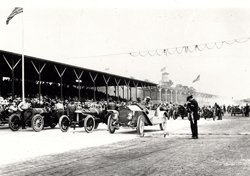
On Tuesday, May 30, 1911, the first ever Indianapolis 500 was raced. Known as the International 500-Mile Sweepstakes Race, what is now one of the world’s most famous races was held at the now legendary Indianapolis Motor Speedway. The race was the first single, large-scale event to be held at the track. In the preceding two years since it was built, the speedway held smaller races.
The decision to host a major event at the track was influenced by dwindling crowds. In the 1910 season, there were encouraging signs that spectatorship was alive and kicking. There were 60,000 attendees for the Wheeler-Schebler Trophy on Memorial Day but by Labor Day, crowds had diminished. The reason for the low turnout was believed to be due to an abundance of races at the track. Quite simply, no one was interested – or capable of – watching them all.
The idea was to host a major event at the venue rather than a series of smaller races. The ideas that were pitched at the time were a 24-hour race similar to the 24 Hours of Le Mans, or an endurance race with a grand prize of $25,000. At the time, this purse was considered to be large enough to attract the greatest drivers and manufacturers from around the world.
Organizers were torn between the ideas of an endurance race (the majority of manufacturers would have favored this format) and the 24-hour race. However, with the latter, it was believed that many attendees would leave the arena before the race had concluded.
Structuring the Event
The timeframe for the race would be between 10am and late afternoon, with the distance calculated at anywhere between 480 miles to 800 miles. Various factors were considered for the event, such as the date to host the race. Memorial Day was the preferred option, given that many farmers would have a two-week break for “haying,” which could drive up ticket sales in addition to acquiring further interest from the wider community.
The decision was eventually made to proceed with a 500-mile race at the Indianapolis Motor Speedway on May 30, 1911. Those in the auto racing industry were intrigued by the event, with several publications bringing the news to breakfast tables around the country. The event became a major talking point in the press, as excitement continued to build for a race many believed to be worthy of common conversation.
The Speedway management had anticipated a lot of entries to the race, especially given the publicity and the large prize money to be won. The cost of entry was a pretty large sum, $500 per car, so this prevented a legion of pretenders and amateurs from applying. There was to be no prize money for any driver finishing below 10th place, too, and this is something that could have dissuaded many from entering.
Qualifying for Indianapolis
Regardless, there was an abundance of applications for a place in the event. By the final day for entries, there were 46 cars that had been nominated for a place in what was set to be the first Indy 500. 44 of the 46 cars made it to race day.
Organizers had also set qualifying criteria for the race in order to ensure that there was an equal and level playing field. All cars had to complete laps at up to 88 mph. There was to be a minimum speed of 75 mph over a flying start measured at 0.25 miles of the main straightway, on or under 12 seconds. Any cars that could not achieve this would be given two more chances to do so or face rejection.
Race Day
Of the 46 entries from the U.S. and Europe, 40 lined up on the day, all hoping to get their hands on a part of the largest purse in racing history (at the time). As humorous as it may sound, the grid positions were sorted by the date of filing on entry forms. This was a step away from the standard practice at the time in Europe (a lottery system). Cars were also required to have a minimum weight of 2,330lb and an engine size no greater than 600 cubic inches.
All 40 cars took their positions, five to a row, other than the first and last. The red flag was waved, the course was clear, and the highly anticipated race was finally underway. David L. Bruce-Brown, in an Italian Fiat, established dominance in the first half of the race, only for AAA national champion to overtake him in his “Marmion Wasp.” Harroun would continue to establish his dominance as the race went on.
Harroun would go on to win the race with 88 laps led and an average speed of 74.602 mph. He would finish the race in 6:42:08, becoming the first ever champion of the Indianapolis 500. As such, he collected a total of $10,000, announcing his retirement (he had come out of retirement for the race) and never competing again. Sam Dickson, Arthur Greiner’s riding mechanic, would also never take part again, losing his life on lap 12 when Greiner hit the wall.
Harroun’s victory was celebrated at the time. The race itself was the big winner, however. It was a roaring success and would go on to become one of the most illustrious events in auto racing. As time went on, the Indy 500 would become synonymous with prestige, glamour, and would feature the greatest cars on the planet.
The Great Depression and World War II
A major change to racing occurred in 1915 when wooden ‘board tracks’ were introduced, with the vast majority of races occurring on board tracks from 1918 to 1928. As such, these tracks became synonymous with American open-wheel racing. Unfortunately for those involved in racing, these tracks would eventually be consigned to history when the Great Depression hit the country in 1929.
It wasn’t just the tracks that would become too expensive to maintain due to the financial collapse. The entire industry suffered as a result of what was the worst economic downturn ever seen. The series was forced to abandon its plans for regular seasons during this period, with no more than five races on the calendar going ahead. One race that lasted in these distressing times was the Indy 500.
That was, until the Japanese attack on Pearl Harbor in 1941. World War II had broken out in Europe years earlier but America was not directly involved until the aforementioned attack. As such, auto racing would come screeching to a halt until the war had ended and soldiers had returned home. There was suddenly a real sense of optimism for the series and the American economy would soon be thriving.
The First Race After World War II
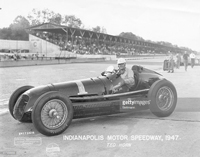
What better place for the series to continue after World War II than at the Indy 500. 1946’s installment of the race saw George Robson take the win in what was the first race in four years. Robson, racing under the Thorne Engineering banner, would be beaten to the championship by Ted Horn that year, however. Horn would also collect the championship in 1947 and 1948, setting a 58-year record that would be matched by Sebastien Bourdais.
Horn would tragically lose his life at the DuQuoin State Fairgrounds on October 10, 1948, due to a broken suspension. He was just 38.
Safety of Drivers Becomes an Issue
On June 11, 1955, at Circuit de la Sarthe in Le Mans, France, 83 spectators and French driver Pierre Levegh were killed. In addition to the fatalities, almost 180 injuries were sustained as a result of flying debris due to the crash. The tragedy is the worst to have ever occurred in auto racing and sent shockwaves around the world. Prominent racing manufacturer, Mercedes-Benz, would not compete again until 1989 as a result.
An inquiry was launched into the accident, with officials confirming that the drivers were not to be completely held accountable for what happened. Instead, the antiquated track was said to be the cause of the crash. Considering the track had been used for 30 years, it was deemed to be incompatible with cars as fast and comprehensive as those racing that day.
The tragic circumstances at Le Mans had a major impact on auto racing. The AAA confirmed that they deemed auto racing as too dangerous and stepped back from their duties as a sanctioning body in the United States. The series would instead be picked up by Jimmy Bryan, Johnnie Parsons and Bill Vukovich of the United States Auto Club (USAC).
The USAC Era: 1956 – 1979
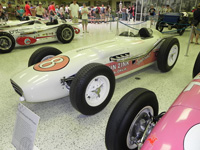
USAC pretty much kept everything the same way as its predecessor, the AAA. The first race under the new regime was the Indy 500 in 1956. Pat Flaherty won the race that day and posed for photos on the cockpit of his John Zink Special as he was surrounded by fans in the bullpen. This was the first milk drank under the USAC’s sanctioning and control, but wouldn’t be the last.
USAC did oversee some crucial changes to how the series would be managed, removing many of the dirt tracks from the race calendar. Given what had happened at Le Mans in 1955, there was a heightened sense of urgency to protect drivers and spectators from a similar tragedy. As such, ovals with asphalt surfaces were introduced and became commonplace in the sport.
The following year saw a rookie by the name of A.J. Foyt make his debut in the sport. At just 22-years old, no one would have expected the type of dominance that Foyt would enjoy in racing. As arguably the greatest driver in the history of the sport, Foyt would set the foundations for the most successful career in the history of IndyCar racing.
The 1960s and 1970s
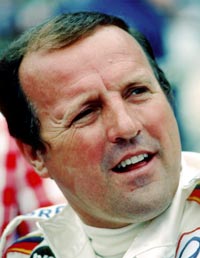
With the dawning of the new decade came changes all around. Engines became more powerful and chassis more refined. The position of the engine would shift to behind the driver in 1964 and would now be turbo. There would also be another race added to the series: The Hill Climb of Pikes Peak. The interesting climb would be knocked off the schedule in 1969, however.
A.J. Foyt was in blistering form throughout the decade, picking up five championships in 1960, 1961, 1963, 1964, and 1967. In 1964, Mario Andretti would also arrive on the scene, demonstrating his slick driving skills and laying the foundations for an incredible career of his own. Andretti would later go on to be regarded as one of the greatest drivers in the history of the series.
In the 1970s, circuits and dirt tracks were all but gone. The six seasons between 1971 and 1976 were exclusively contested on asphalted ovals until a race was trialed at Mosport Park in 1977. 1978 saw the unsuccessful attempt to take IndyCar to Europe – showcasing races at famous British tracks, Brands Hatch and Silverstone – but it was not to be and the endeavor pretty much fell flat on its face.
The Emergence of CART
The most major development of the 1970s was the friction between USAC and team bosses that led to a change in how the series would be operated. USAC had no interest in hearing out team owners and this led to a split. The team owners banded together to create Championship Auto Racing Teams (CART), bringing most drivers across to the new association.
A series of incredibly tragic and misfortunate situations occurred around the time of the split, in 1977 and 1978. Indianapolis Motor Speedway president and USAC founder, Tony Hulman, died of heart failure on October 27, 1977. Another eight major officials of USAC then died in a plane crash on April 23. CART now had full control of championship racing and had completely broken away from USAC. Well, almost.
The Sports Car Club of America (SCCA) helped CART to gain recognition as an official governing body from The Automobile Competition Committee for the United States (ACCUS). As USAC had not completely folded, there were two national championships (with CART running the second). The most prized event, the Indy 500, was still under the sanction of USAC (who denied entrance to CART teams at the 1979 version of the race).
The Dispute Continues
Despite an ill-fated merger in 1980, known as the Championship Racing League (CRL), USAC and CART each awarded their own national championship. Jonny Rutherford won both, making it a pretty strange season in all. As USAC still had the Indy 500, things got even more confusing. CART was sanctioning the national championship and had more participants in the Indy 500.
USAC decided to treat the ‘500 as an invitational in a bid to avoid the controversy of the denied entries to CART teams in 1979. Pretty soon, USAC would only sanction one championship race, the Indy 500.
The Gold Crown Championship
CART had the national championship under its wings, making things a little more stable. USAC still had the Indy 500 but drivers could still earn points towards their seasonal championship tallies. Cars and engines remained the same, regardless of the sanctioning bodies they raced under. While there was still a little bit of confusion to work through, things were not as hectic as they had been in the late 1970s.
As USAC only sanctioned the Indy 500, its Gold Crown Championship would be awarded to the driver that won that race.
The 1980s to 2008
As with other pretty much every series in racing, the 1980s marked a giant leap forward. For IndyCar, there was an abundance of interest from manufacturers and the caliber of drivers had never been higher. This combination – in addition to a busier calendar – would drive great interest from spectators and sponsors. There was little doubt that IndyCar had a bright future ahead.
IndyCar bosses wanted a stable platform to challenge F1. They certainly had the talent and the muscle, but F1 was also enjoying a massive boost itself. Rick Mears, the most successful driver of the 1980s, was challenged by Mario Andretti, Al Unser Jr., Danny Sullivan, Emerson Fittipaldi (among others), and this sent out the right statement to everyone involved in auto racing.
The first five years of the 1990s saw three champions from outside of the United States crowned in IndyCar. Arie Luyendyk, Emerson Fittipaldi, and Jacques Villeneuve showed the world that the series did not necessarily have to be conquered by those from the U.S. Other drivers like Nigel Mansell and Paul Tracy added a cosmopolitan feel to the series and this was a good thing for the future of the sport.
The Second Split: CART and IRL
Just when things seemed to be going well, tension was beginning to boil over between CART and Tony George, the Indianapolis 500 President. This culminated in George pulling the Indy 500 from the National Championship in a bid to create a more American-centric racing series. George wanted American drivers only and the series to be raced on ovals.
What this meant for CART was that it now had to find a way to survive without IndyCar’s version of the Super Bowl. It appeared that the series was still popular, in spite of the circumstances, with star drivers like Alex Zanardi, Juan Pablo Montoya, Jimmy Vasser, and Michael Andretti helping to keep the series going strong. However, George had recently formed the Indy Racing League (IRL) as direct competition to CART.
CART also found itself engrossed in a legal battle with George over the rights to the “IndyCar” name. An agreement between both parties saw CART relinquish all use of the name, with the IRL unable to make use of the name until 2003, seven years after it had intended to begin. CART would now rebrand their cars using the term “Champ Cars.”
The status quo remained and this favored CART. They maintained control over the talent, sponsors, and fanbase. Things were not to last, however, as the sanctioning body would lose teams who had jumped ship to the IRL. The cancellation of the Firestone Firehawk 600 in 2001 hit CART badly and just two years later, it lost its main sponsor, FedEx, and Honda and Toyota(its engine manufacturers) to the IRL.
The End of CART
By 2002, CART was struggling badly. It had lost its sponsors, its star teams, and was seriously in debt. Spectator interest had all but dried up, with attendances all but depleted from the glory days of the organization. The Champ Car World Series of 2013 fell flat and was not enough to save the former giant from falling hard. That year, CART entered bankruptcy proceedings.
Kevin Kalkhoven, Paul Gentilozzi, and Gerald Forsythe acquired the series and rebranded it Open Wheel Racing Series (OWRS). Tony George wanted to purchase CART but lost out to OWRS. This kept the series alive, as there was little doubt that George would have preferred to shut it down completely. However, with a reduction in races and numerous penny-pinching exercises, Champ Car was a shell of the glory days.
Modernizing IndyCar: 2008 Onwards
2008 saw a return to peace following a bitter feud between CART (later Champ Car) and the IRL. In February of that year, a merger was agreed between both sides. Champ Car director, Kevin Kalkhoven, shook hands with Tony George on a deal that wouldn’t exactly sit right with many involved in the sport. The nature of the agreement certainly appeared to be a little polarizing.
The “merger” seemed to strongly favor the IRL. In fact, Champ Car was completely disbanded and its teams were provided with cars to jump ship. The IRL had now gained Champ Car’s biggest races (Long Beach and Edmonton). The structure of the sport was certainly looking more a product of George’s minds than anyone at Champ Car. Unless that is, you consider the tracks.
In 2011, the ovals that George had pushed for were reduced to seven (down from four in 2008). Permanent and street circuits were the focus, which is pretty ironic in the circumstances. Regardless, the new unified series would function as the IndyCar Series, with both calendars combining.
Tony George is Axed
In 2009, George was removed as the head of the IRL due to what was believed to be a problem with his excessive spending while at the helm of the organization. In 2010, Randy Bernard – former director of the Professional Bull Riders – would take his place. Following years of bitter squabbling, Geroge’s influence would no longer be directly felt by those in the sport.
Bernard had a more diplomatic approach, or so it seemed. He pushed for the unification of Champ Car and IRL statistics under the new IndyCar banner and spearheaded a number of others changes and developments during his tenure.
Chevrolet and Lotus
With a new car arriving in IndyCar, competition was back on the agenda. Chevrolet and Lotus were the new challengers to Honda’s success and were poised to produce aero kits in 2013. This plan was stalled. Lotus’ first season in IndyCar was also a failure, and they ducked out in 2012. The British manufacturer had failed to build a turbo engine capable of keeping up with Honda and Chevrolet, leaving the Japanese and Americans as the sole engine providers in the series.
Both manufacturers would also design their own aero kits from 2015 onwards. While their creations were successful, they were not aesthetically pleasing whatsoever, drawing criticism from many quarters. The designs led to a return to the DW12 of the early 2010s in 2018, minus the airbox and rear bumpers. It appeared that, as the century was closing out, many were keen to look back a little, rather than too forward.
The great drivers who have had their hands in creating the sport we know and love today should always be remembered. Without knowing where you come from, it is pretty difficult to understand where to go next. History provides us with a series of lessons, mistakes, and exceptional circumstances to learn from. With IndyCar racing, it feels as though we have just begun to scratch the surface of what is possible.
From the great drivers to the exceptional manufacturers, the team owners to the fans, everyone gets to share the future of this sport. Without the brave and pioneering efforts of the men who created this sport, we wouldn’t have that opportunity at all.